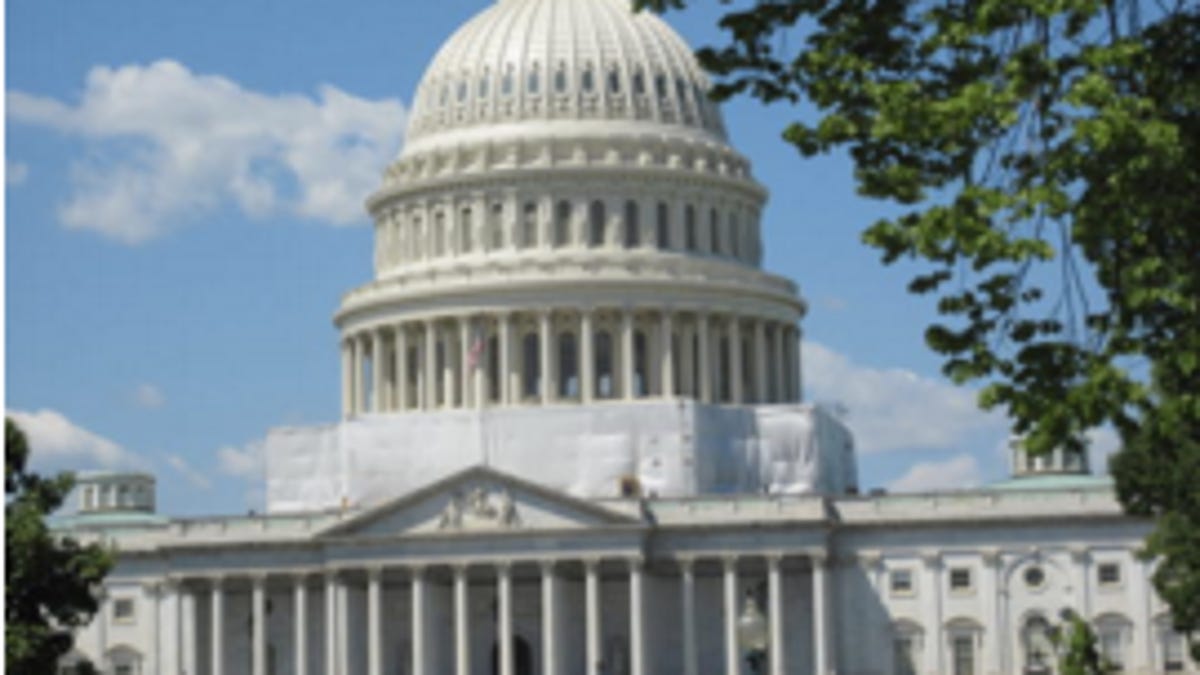House passes bills to improve the FCC's broadband maps
The legislation is meant to improve the accuracy of maps the FCC uses to determine who has broadband and who doesn't.

The House passed two bills to help improve accuracy of broadband maps, which are used to direct federal subsidies to rural carriers deploying service in hard to reach areas.
Lawmakers in Congress are getting serious about figuring out who has broadband and who doesn't to better target federal subsidies for rural broadband deployment. On Monday, the House of Representatives approved two bills designed to improve broadband mapping.
The bills still need approval from the Senate before they make their way to President Donald Trump's desk for signing.
The Broadband Deployment Accuracy and Technological Availability (DATA) Act requires the government to collect granular information about which regions of the US have access to broadband internet and which don't.
The Mapping Accuracy Promotes Services Act, which also passed the House on Monday, bars anyone from "willfully, knowingly, or recklessly" submitting false broadband internet access service coverage information or data to the Federal Communications Commission for mapping purposes.
The two bipartisan bills are meant to help the FCC improve its current broadband maps, which have come under fire from lawmakers on the left and right for being inaccurate, overstating coverage in many rural areas of the country.
Taken together, these new bills should help spur further action at the FCC, which knows it has a problem with its maps and which voted earlier this year to develop a more granular data collection process that allows for input from individuals on the ground.
"Accurately mapping the availability of broadband internet service is essential to promoting the deployment of high-speed service to all Americans, especially those in unserved and underserved areas" said Energy and Commerce Committee Chairman Frank Pallone, Jr., a Democrat from New Jersey, and subcommittee Chairman Mike Doyle, a Democrat from Pennsylvania.
The problem with the maps
The FCC's latest report suggests that 21 million Americans lack access to broadband with download speeds of 25Mbps at a time when the service is considered as important as water or electricity. Though this number is large, many people fear the actual figure is even greater, especially in rural areas where FCC data isn't as accurate.
This is a problem because the US government spends more than $4 billion a year to subsidize companies offering broadband in the least accessible and most expensive places to operate. But with inaccurate maps, it's hard to know if the money is going to the right places.
This is where the maps are key. The FCC maps are supposed to sketch out where broadband is and isn't available to figure out who gets the money. Because every dollar counts, the FCC must ensure it's targeting areas that need service but not subsidizing network build-outs in areas that already have coverage.
But there are lots of problems with the current system for collecting the data to create these maps. The FCC builds its coverage maps using data that ISPs report twice a year in what's called Form 477. The first problem is that the data that's collected is self-reported by the carriers.
Earlier this year a wireline carrier erroneously overstated its coverage, which skewed the FCC's draft report on broadband deployment. The mistake exaggerated progress in closing the digital divide. Just this month, wireless carriers Verizon, T-Mobile and US Cellular were called out in an FCC report for overstating their wireless coverage. As a result, the FCC reworked a $4.5 billion subsidy program to bring 4G LTE to rural communities, because the data was so skewed. The carriers say they were reporting what the FCC had requested.
The MAPS bill that just passed the House would criminalize knowingly reporting false coverage information.
But the bigger problem with broadband maps has to do with the parameters the FCC sets for collecting the data. Currently, broadband providers report coverage based on census blocks, the smallest geographic area used by the US Census Bureau. If service is available in one part of a census block, the entire block is considered to have broadband. In rural areas, that home may be the only place with internet service for miles around. This is where the DATA Act would help.
The Competitive Carrier Association, which represents many small rural carriers, applauded the House's passage of the bills.
"The Broadband DATA Act and the MAPS Act are extremely important to ensuring no American is left behind in the digital world," Steven Berry, president and CEO of the CCA said in a statement.
He added that improving the data collection for the maps has been a top priority for the CCA's members.
"It is absolutely critical that the maps are based on parameters that accurately reflect consumers' on-the-ground experiences to ensure all consumers, especially those in unserved and underserved areas, have access to vital mobile broadband services," he said.

